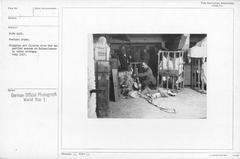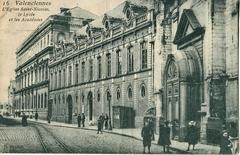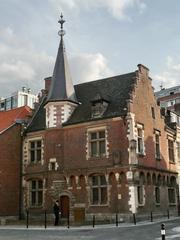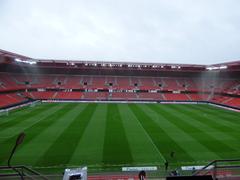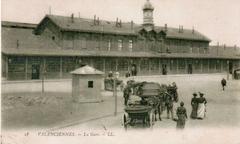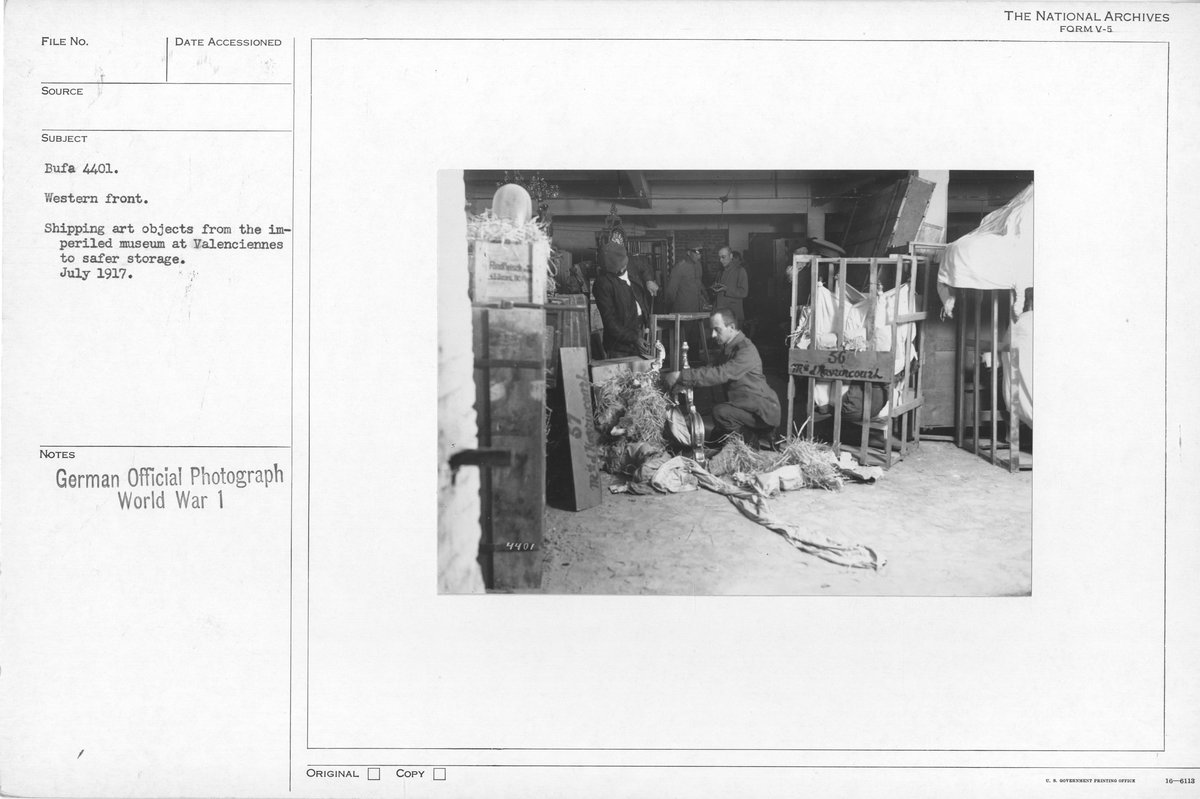
Musée des Beaux-Arts de Valenciennes: Visiting Hours, Tickets, and Travel Guide
Date: 15/06/2025
Introduction
Situated in the heart of Valenciennes, northern France, the Musée des Beaux-Arts de Valenciennes is a prominent cultural institution and a testament to the city’s enduring artistic legacy. Established in 1801, the museum is one of France’s earliest municipal museums. Housed in an elegant neoclassical building designed by Paul Dusart and inaugurated in 1909, it is celebrated for both its architectural finesse and its extensive collections. Visitors can expect to discover masterpieces from the Middle Ages through to the 20th century, including works by Flemish and Dutch masters such as Rubens, Van Dyck, and Jordaens, as well as French artists like Delacroix, Picasso, and Valenciennes’ own Jean-Baptiste Carpeaux.
Currently, the museum is undergoing a €15 million renovation, scheduled for completion in September 2025. Modernized facilities, improved accessibility, and expanded exhibition spaces are at the core of this transformation, in line with the ambitious Projet Scientifique et Culturel (PSC) that seeks to preserve the museum’s legacy while broadening its public engagement through digital innovation. This detailed guide provides essential information on visiting hours, tickets, accessibility, guided tours, and nearby attractions, equipping you for a comprehensive and inspiring visit. For real-time updates and interactive content, consult the museum’s official website and use the Audiala app for guided tours.
Contents
- Introduction
- History and Origins
- Architectural Significance
- Collection Highlights
- Flemish and Dutch Masters
- French Artists and Sculptors
- Archaeology and Regional Heritage
- Renovation and Modernization
- The Scientific and Cultural Project (PSC)
- Role in Valenciennes’ Cultural Life
- Visitor Information
- Opening Hours
- Tickets
- Guided Tours and Educational Programs
- Accessibility
- Nearby Attractions
- Visuals and Media
- Frequently Asked Questions (FAQ)
- Conclusion and Final Tips
- Sources
History and Origins
The museum was established in 1801, emerging from the efforts of the Académie valenciennoise de peinture et de sculpture to promote fine arts in the region. Initially located in the Hôtel de Ville, the collections reflected the city’s ambition to become a regional cultural center. Over the centuries, acquisitions, state deposits, and donations—particularly following the French Revolution—enriched the museum’s holdings, making it an important repository of northern European and French art (Wikipedia).
Architectural Significance
Following a surge in the museum’s collection in the late 19th century, an architectural competition in 1897 led to Paul Dusart’s selection as architect. The museum’s neoclassical design, inspired in part by the Petit Palais in Paris, balances monumentality with functionality and maximizes natural lighting in exhibition spaces (source). Construction began in 1905, and innovative features such as reinforced concrete floors and modern heating systems were integrated to safeguard the artworks. The central rotunda, or Rotonde Carpeaux, serves as a dramatic focal point, from which galleries radiate in a logical and accessible layout (source).
Successive renovations, notably in 1995 and 2014–2015, have enhanced climate control, lighting, and accessibility, while preserving the building’s historical essence (source).
Collection Highlights
Flemish and Dutch Masters
The museum’s Flemish collection is among the finest in France, reflecting Valenciennes’ historic ties to the Low Countries. Notable masterpieces include the Triptyque de saint Étienne by Rubens, alongside significant works by Jacob Jordaens, Anthony van Dyck, and David Teniers the Younger. These pieces illustrate the grandeur and dynamism of Baroque painting (Wikipedia).
French Artists and Sculptors
The museum is particularly renowned for its holdings related to local icons Antoine Watteau and Jean-Baptiste Carpeaux. The “Salon Carpeaux” displays a comprehensive selection of his plaster models, bronzes, drawings, and paintings. The French collection extends from classicism to romanticism, with works by Delacroix, Greuze, Le Brun, and others (Archive.org).
Archaeology and Regional Heritage
A significant addition during the 1995 renovation, the archaeological crypt presents artifacts from prehistoric times through the Middle Ages. Roman ceramics, medieval religious objects, and regional finds contextualize Valenciennes’ strategic historical position (Musée de Valenciennes).
Decorative Arts and Tapestry
The Tapisserie du Tournoi, a monumental late 15th-century tapestry, depicts a lavish tournament attended by French and German nobility. Though not always on permanent display due to its fragility, it stands as a rare highlight of medieval textile art (Musée de Valenciennes).
The museum also features regional ceramics, furniture, textiles, and silverware, illustrating local craftsmanship across the centuries.
Drawings and Graphic Arts
The cabinet de dessins contains preparatory sketches and finished drawings from both local and international artists, offering insight into the creative processes behind the museum’s major works.
Renovation and Modernization
Undergoing a €15 million renovation since 2021, the museum is enhancing its structural integrity, climate control, and visitor amenities. The project, set for completion in September 2025, will provide expanded exhibition spaces and improved accessibility, ensuring optimal conditions for both masterpieces and visitors (Musée des Beaux-Arts de Valenciennes History and Visitor Guide).
The Scientific and Cultural Project (PSC)
This strategic plan guides the museum’s modernization, emphasizing conservation, research, public engagement, and digital innovation. The PSC supports a dynamic program of thematic exhibitions, educational outreach, and new digital resources.
Role in Valenciennes’ Cultural Life
Long regarded as the “Athens of the North,” Valenciennes owes much of its cultural identity to the museum. Its collections and educational programs attract visitors from France, Belgium, and beyond, cementing its role as a regional hub for the arts (source).
Visitor Information
Opening Hours
- During Renovation: The museum is temporarily closed and will reopen in September 2025.
- Typical Hours: After reopening, the museum is expected to be open Wednesday to Sunday, 10:00 AM to 6:00 PM, with extended hours on Thursdays until 8:00 PM. Closed Mondays and Tuesdays. Always confirm current hours on the official website.
Tickets
- Standard Admission: Generally €6; reduced rates for students, seniors, and groups (€4).
- Free Entry: For children under 18, EU residents under 26, and all visitors on the first Sunday of each month.
- Special Exhibitions: May have separate pricing; booking in advance is recommended during peak times (Nord Découverte).
- Purchase: Onsite at the reception or online via the museum website upon reopening.
Guided Tours and Educational Programs
- Regular guided tours (French and sometimes English) focus on permanent collections, temporary exhibitions, or architectural features.
- Workshops, lectures, and family-friendly activities are offered throughout the year. Group visits and school tours can be arranged in advance.
Accessibility
- The museum is fully wheelchair accessible, with elevators, ramps, tactile pathways, and accessible restrooms.
- Assistance is available for visitors with disabilities; guide dogs are welcome.
- Stroller access and baby-changing facilities are provided.
Amenities
- Cloakroom, restrooms, and a gift shop are available onsite.
- A variety of cafés and restaurants are within walking distance, notably around the Grand’Place.
Location and Getting There
- Address: 17 Avenue des Dentellières, 59300 Valenciennes.
- 15-minute walk from Valenciennes SNCF train station; public parking and bus services are available (Nord Découverte).
Nearby Attractions
- Grand’Place: The central city square, ideal for dining and people-watching.
- Parc de la Rhônelle: A lush park just 800 meters from the museum.
- Valenciennes Town Hall and Saint-Géry Church: Notable historical sites within easy reach.
- Spanish Houses: Unique examples of the city’s architectural history.
Visuals and Media
Recommended images and alt tags:
- Photo of the museum façade (alt: “Musée des Beaux-Arts de Valenciennes entrance”)
- Rubens’ Triptych (alt: “Peter Paul Rubens Triptyque de saint Étienne at Musée des Beaux-Arts de Valenciennes”)
- Salon Carpeaux (alt: “Jean-Baptiste Carpeaux sculptures in the Musée des Beaux-Arts de Valenciennes”)
- Tapisserie du Tournoi (alt: “Tapisserie du Tournoi at Musée des Beaux-Arts de Valenciennes”)
- Map of the museum location and nearby attractions
Frequently Asked Questions (FAQ)
Q: When will the Musée des Beaux-Arts de Valenciennes reopen?
A: September 2025, following extensive renovations. Check the official website for any updates.
Q: How can I buy tickets?
A: Tickets will be available onsite and online after reopening.
Q: Is the museum accessible for visitors with disabilities?
A: Yes, including wheelchair access, accessible bathrooms, and guide dog allowance.
Q: Are guided tours available?
A: Yes, in French and sometimes English. Advance booking is recommended.
Q: Can I take photographs inside the museum?
A: Non-flash photography is generally permitted in permanent collections; restrictions may apply for temporary exhibitions.
Q: Are there family-friendly amenities?
A: Yes, including stroller access, baby-changing facilities, and educational workshops.
Q: What are some nearby attractions?
A: Grand’Place, Parc de la Rhônelle, Saint-Géry Church, and Valenciennes Town Hall.
Conclusion and Final Tips
The Musée des Beaux-Arts de Valenciennes is a vital destination for anyone interested in European art, regional history, and architectural heritage. Its collections span centuries and continents, while the current renovation promises an even more engaging, accessible, and modern visitor experience. Upon reopening, plan your visit to include time for guided tours, nearby attractions, and exploration of Valenciennes’ vibrant city center.
For the latest information on reopening, ticketing, and special events, always consult the museum’s official website and consider downloading the Audiala app for digital guides and immersive content.
Sources
- Musée des Beaux-Arts de Valenciennes: History, Visiting Hours, Tickets & Tips for Exploring Valenciennes’ Premier Art Museum, 2025 (https://musee.valenciennes.fr)
- Discover the Architectural Marvel and Visiting Essentials of the Musée des Beaux-Arts de Valenciennes, 2025 (https://musee.valenciennes.fr/le-musee/son-histoire/)
- Visiting the Musée des Beaux-Arts de Valenciennes: Hours, Tickets, Collections, and Tips, 2025 (https://musee.valenciennes.fr)
- Practical Visitor Information on Musée des Beaux-Arts de Valenciennes, 2025 (https://nord-decouverte.fr/musee-des-beaux-arts-de-valenciennes/)
